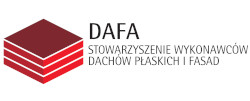Open Access (Artykuł w pliku PDF)
Reflection intensity of terrestrial laser scanning dependence on the physical properties of building materials and scanning conditions
dr hab. Małgorzata Ulewicz, prof. PCz, Politechnika Częstochowska, Wydział Budownictwa
ORCID: 0000-0001-8766-8393
dr inż. Joanna A. Pawłowicz, Uniwersytet Warmińsko-Mazurski w Olsztynie, Wydział Geoinżynierii
ORCID: 0000-0002-1334-5361
Adres do korespondencji: Ten adres pocztowy jest chroniony przed spamowaniem. Aby go zobaczyć, konieczne jest włączenie w przeglądarce obsługi JavaScript.
DOI: 10.15199/33.2022.11.17
Oryginalny artykuł naukowy
Streszczenie. W sektorze budowlanym obserwowany jest w ostatnich latach duży wzrost zainteresowania techniką naziemnego skaningu laserowego (TLS). Jednym z czynników w tej technice, który ma wpływ na moc odbitej wiązki lasera, jest rodzaj skanowanej powierzchni uzależniony od właściwości fizykochemicznych skanowanych materiałów. W artykule wykazano, że gęstość i nasiąkliwość badanego materiału, rozdzielczość skanowania oraz tło pomiarów wpływają na jakość uzyskanej chmury punktów, a technika TLS ma duży potencjał wspomagania procesów identyfikacji wizualnej materiałów wbudowanych w obiekty budowlane.
Słowa kluczowe: materiały budowlane, właściwości fizyczne materiałów, skaning laserowy.
Abstract. In the construction sector, there has been a large increase in interest in the Terrestrial Laser Scanning (TLS) technique in recent years. One of the factors influencing the power of the reflected laser beam in this technique is the type of the scanned surface, determined by the physicochemical properties of the scanned materials. The study showed that the density and water absorption of the tested material, scanning resolution and measurement background affect the quality of the obtained point cloud, and the TLS technique has a great potential to support the processes of visual identification of materials built into the structure.
Keywords: building materials, physical properties of materials, laser scanning.
Literatura
[1] Javaid M, Haleem A, Singh RP, Suman R. Industrial perspectives of 3D scanning: Features, roles and it’s analytical applications, Sensors International, 2021, 2, 100114, /doi. org/10.1016/j.sintl.2021.100114
[2] Wu C, Yuan Y, Tang Y, Tian B. Application of terrestrial laser scanning (TLS) in the architecture, Engineering and Construction (AEC) Industry, Sensors, 2022; (22):265. doi. org/10.3390/s22010265.
[3] Pawłowicz JA. Digital survey of damages on the fasade of a historical building, Acta Sci. Pol. Architectura. 2021; 20(2):41-50, DOI: 10.22630/ ASPA.2021.20.2.13.
[4] El-Omari S, Moselhi O. Integrating 3D laser scanning and photogrammetry for progress measurement of construction work, Automation in Construction. 2018; (18):1-9, doi.org/10.1016/j. autcon.2008.05.006.
[5] Kysiak A. Analiza możliwości zastosowania skaningu laserowego 3D w inwentaryzacji obiektów i elementów konstrukcji o złożonym kształcie i powierzchni, Zeszyty Naukowe PCz. 2018; (24):197-202, DOI: 10.17512/znb.2018.1.30.
[6] Suchocki Cz, Katzer J, Damięcka-Suchocka M, Kuźmińska M, Rapiński J. Monitoring zawilgocenia obiektu budowlanego z wykorzystaniem techniki naziemnego skaningu laserowego, Biuletyn WAT, 2017, LXVI (4) 155-166, DOI: 10.5604/01.3001.0010.8232.
[7] Suchocki Cz, Katzer J. TLS data-set showing the effect of surface colour and roughness on the absorption and dispersion of a laser beam, Mendeley Data, 2021, V1, DOI: 10.17632/nsp2m4ddjf. 1.
[8] Hassan MU, Akcanete-Gungor A, Meral C. Investigation of terrestrial laser scanning reflectance intensity and RGB distributions to assist construction material identification [in] LC3 Proceedings of the Joint Conference on Computing in Construction (JC3), July 4-7, 2017, Heraklion, Greece, 507-515. DOI: 10.24928/JC3- 2017/0312.
[9] Pawłowicz JA. Wpływ cech fizycznych różnych materiałów na jakość danych uzyskanych ze skaningu laserowego 3D. Materiały Budowlane. 2016; (12):76-77.
[10] Costantino D, Pepe M, Angelinii MG, Evaluation of reflectance for building materials clasydication with terrestrial laser scanner radiation, Acta Polytechnica, 2021, 61(1):174-198, DOI: 10.14311/AP.2021.61.0174.
Przyjęto do druku: 26.09.2022 r.
Materiały Budowlane 11/2022, strona 63-65 (spis treści >>)




























